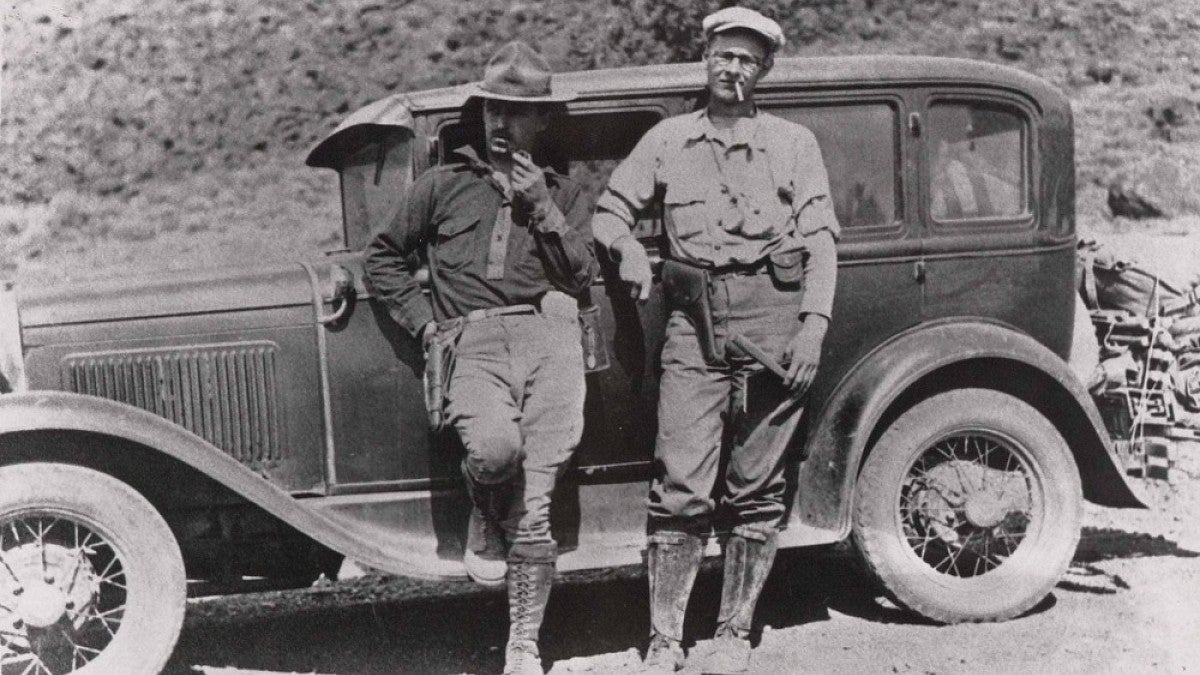With help from a nonprofit organization created to help save America's film heritage, the University of Oregon Libraries, the Museum of Natural and Cultural History and the Jordan Schnitzer Museum of Art soon will begin projects to preserve several unique, historically significant films and make them available for study, research and exhibition.
The National Film Preservation Foundation recently announced the most recent group of films slated for preservation through its annual grant program. Among the 64 works selected are the “Luther Cressman Field Work Films (1938-1954),” documenting the work of a pioneering UO archaeologist, and “The Olive Trees of Justice (Les Oliviers de la Justice),” a dramatic feature by 1953 UO alumnus James Blue that won the Critics’ Prize at the 1962 Cannes Film Festival.
RELATED LINKS
Restored prints of these films will be permanently deposited in the library’s Special Collections and University Archives, which also holds the papers of both Blue and Cressman.
“I’m thrilled to have these important films preserved,” said Elizabeth Peterson, humanities librarian and curator of moving images with the UO Libraries. “And I’m pleased to be able to collaborate with the Museum of Natural and Cultural History and the James Blue Alliance to save these resources.”
Richard Herskowitz, curator of media arts at the Schnitzer Museum, is chair of the James Blue Research Interest Group at the UO. “While James Blue has been widely acclaimed for his documentary work,” he said, “his stunning debut as a director of narrative features has been almost completely forgotten. Once the film is restored, we plan on collaborating with the James Blue Alliance to arrange a theatrical and video release of the film that will broaden awareness of this great Oregon-raised and educated filmmaker.”
Like Blue, Luther Cressman (

In the 1930s, at Fort Rock Cave and Paisley Caves, Cressman and his collaborators unearthed evidence that would significantly recalibrate the time scale for human habitation in our region. Recently, museum archaeologists have demonstrated that Paisley Caves was one of the oldest inhabited sites in all of North America.
“The fieldwork footage may reveal aspects of Cressman’s research that aren’t fully explained in his field notes or reports, providing important context for archaeologists who continue to work on these sites,” said anthropological collections director Pamela Endzweig.
“Improving access and preservation are two of the UO Libraries’ most important goals when it comes to stewardship of special collections,” said Dean of Libraries and Philip H. Knight Chair Adriene Lim. “Because of this, the opportunity to work on such unique and important films and ensure their continued availability for researchers is especially exciting.”
The National Film Preservation Foundation is a grant-giving public charity affiliated with the Library of Congress' National Film Preservation Board. Since its creation by Congress in 1996, the foundation has provided preservation support to 284 institutions and saved more than 2,250 films through grants and collaborative projects.
—By Jason Stone, UO Libraries


